Clinical Differential Diagnosis
Pericardial effusion
Cardiomyopathy – hypertrophic, dilated
Myocarditis
Cardiac neoplasia
Pulmonic thrombo-embolic disease
Metabolic disease – anemia, met-hemoglobinemia
Sonographic Differential Diagnosis
(Modler): The most remarkable abnormality is the presence of a mass or masses within the pulmonary artery and attached to the pulmonic valve. All masses have the same echogenicity and cause obstruction to flow which the consequence of right ventricular hypertrophy. Even though it cannot be ruled out that these masses are thrombi (but not septic thrombi because there is no history of fever) I would think that this is neoplasia (thrombosis usually causes pulmonary hypertension). One case of pulmonary artery leiomyosarcoma is mentioned in the veterinary literature, more can be found in human literature.
Obtaining a sample via catheter (snare) would be ideal If this is not possible then the only option would be r ight heart surgery (no cardioplegia necessary).
And I would recommend administration of Plavix or aspirin in this patient as a palliative measure and recheck sonogram weekly if no sampling is possible.
Sampling
Post mortem biopsy revealed marked lung congestion, right ventricular hypertrophy, and grade 3 fibrosarcoma of the pulmonary valve with attached thrombus.

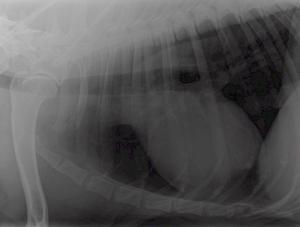
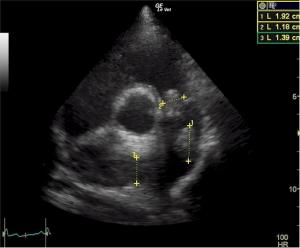
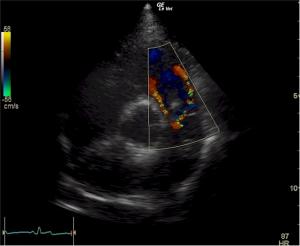
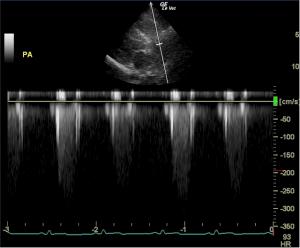
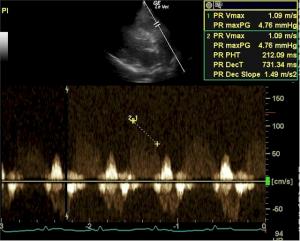

Comments